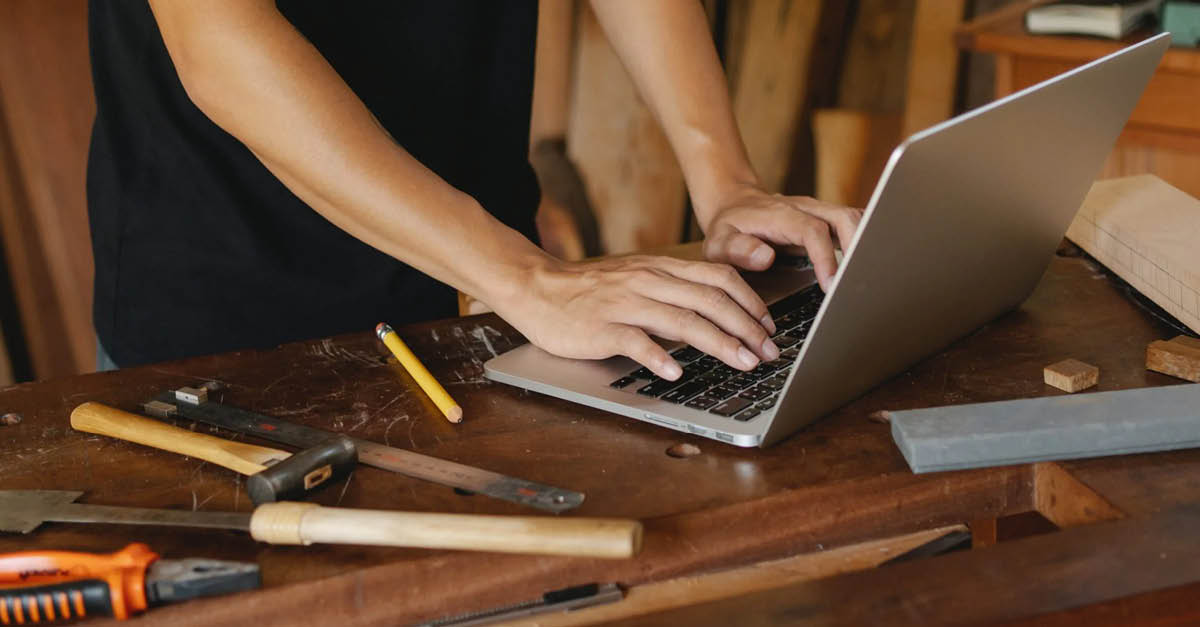Fishing for the right tutorial in the YouTube Ocean is not that easy if you don’t want to be driven by chance. For self-directed learning to be reasonably efficient, it requires skills that usually have nothing to do with the learning goal.
Part of my new life on a small island in the middle of the Atlantic is that I do a lot of things myself. So, I started working with wood and carrying out small carpentry jobs. I haven’t done that since the handicraft lessons in my youth. Back then, I didn’t think I was talented, nor was I particularly interested in handling saws and sandpaper. Surprisingly, that is different today.
Putting together a small cabinet, a box or even a folding table gives me great satisfaction. The material feels good and visible results immediately reward my effort. But of course, I am still not a master of the craft and am constantly confronted with new questions. How do I get a hole drilled at a right angle? Which hinges should I choose and how should I sink them into the wood so that the chest closes seamlessly? How can I reinforce table legs so that the table does not wobble?
Dozens of answers
Of course, I find answers to all these questions on the internet. Not one, but dozens. I can choose whether I want to take instruction from a serious German master carpenter, a redneck with southern slang or a guy with tattoos on both hands who always promises simple solutions but uses machines that are not even available for purchase on my island. I practice self-directed learning, albeit free-swimming in an ocean of information.
A sobering insight in this is: Not every promise of a solution is delivered – or is practical for me. The search for suitable instructions thus consumes a lot of time. Sometimes it is entertaining to browse through the channels. But it can also be annoying to watch a self-promoter for minutes until it becomes clear that his tips are the wrong ones after all. In the meantime, I have learned to optimise my search queries, I have also learned technical terms and filter out certain channels from the outset. Nevertheless, I keep falling into traps.
Less craft, all the more language
To get my handicrafts off the ground, I need digital skills first and foremost. I need to know how to feed the algorithm so that it produces the most useful results possible.
Maybe sooner or later artificial intelligence (AI) will contribute something to increasing the efficiency of the search. But even when dealing with dialogue-based AI, the more precisely I describe the problem, the more precise the search will be. At first, exchanging information with a reasonably intelligent chatbot has nothing to do with manual work, but all the more with logical thinking, the mastery of certain terms and the ability to express oneself linguistically.
My attempts as a craftsman have taught me something about the problems of self-directed learning. At first glance, the promise of digitalisation to democratise access to information, and with it a revolution in learning, seems to be true. At second glance, however, it becomes apparent that the prerequisite for this is new skills that may first have to be acquired.
One could speak of digital literacy, without which self-directed learning can be at least tedious, sometimes even frustrating. This might also apply to more complex issues than choosing the right sandpaper or using a circular saw. That self-directed learning can easily replace formal courses, and that it is cheaper and more practical because it can be done at any time and from any place, must therefore at least be questioned. Under certain circumstances, the supposed advantages turn out to be nasty pitfalls.
